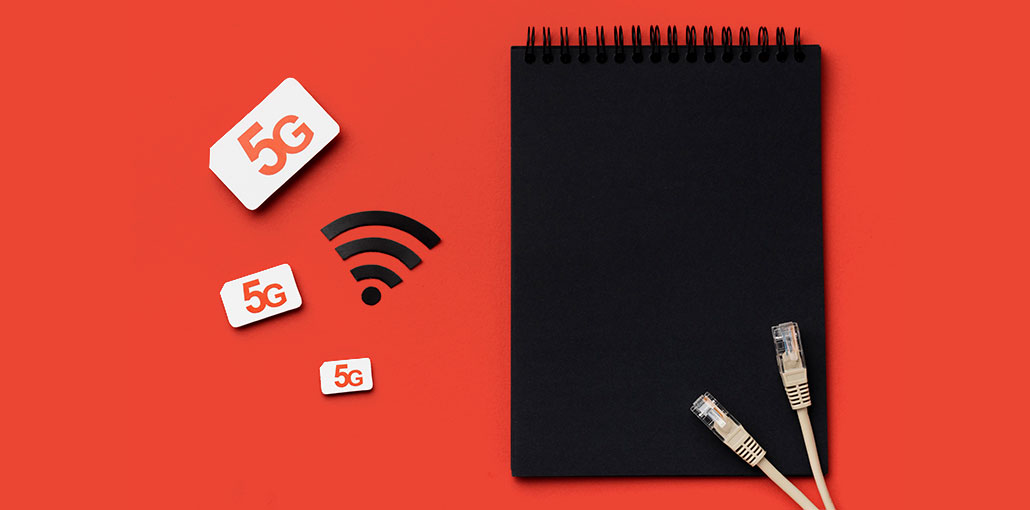In an age of 5G technology, there’s no doubt that wireless technology is all the rage in 2021. It’s also estimated that the number of 5G subscriptions worldwide will reach three billion by 2025, while the forecasted share of 5G-enabled smartphones will peak at 69% in 2023.
While 5G is changing mobile connectivity, however, a debate continues to rage about the pros and cons of wired vs. wireless connectivity in the business realm.
In this post, we’ll compare wired vs. wireless connectivity options, while asking which one is best for you?
The Pros and Cons of Wired Connectivity
We’ll start by discussing wired connectivity, which offers a number of advantages and potential pitfalls to users. Here are some of the benefits:
- Speed: Wired networks are considered to be quicker than wireless alternatives, even in an age of fiber-optic broadband.
- Security: They also tend to be more secure than wireless networks, as the network and the data included within can only be accessed via a physical connection.
- Reliability: In industrial applications where there’s a great deal of noise and interference, wired connections are more suitable as they’re more resistant to various sources of interference that may disrupt the transmission of data.
Also read: What Are The Pros and Cons of VPNs?
In terms of pitfalls, there are various issues to consider from the perspective of wired connections. For example:
- Limited Connectivity: With wired connections, you’re limited by the need to use a cable or connect to a port. This limits portability and mobility within office spaces.
- Less Convenient: As you have to be cabled to a wired network to achieve connectivity, it’s far less convenient to share files in real-time (although transfer speeds can be faster).
- Health and Safety: From a commercial perspective, wired connections require a large number of cables and ports. This can be a headache while creating various health and safety concerns in your office.
The Pros and Cons of Wireless Connections
But what about wireless connections? Well. let’s get started by considering the main advantages of this type of connectivity:
- Greater Accessibility: Users can access this type of network from anywhere within the designated range or catchment area, including guests, customers, or clients
- Ease of Use: While wireless networks are typically slower than wired alternatives, they do allow greater ease of use of convenience when sharing urgent or time-sensitive files (or posting updates on social media).
- Greater Income: When dealing directly with the public, customers tend to prefer and indeed expect wireless connectivity. This can therefore increase income and revenue over time.
As for the cons, there are various reasons why you may not consider a wireless broadband connection. For example:
- Less Secure: Typically, wireless connections are less secure as both bandwidth and sensitive customer data can occasionally be accessed. So, you may avoid wireless connectivity depending on the nature of your business.
- Speed: As we’ve already said, wired connections are far quicker than wireless alternatives. This applies to transfer speeds, downloads, and messaging.
- More Expensive (When Upgrading): If you have a wired network but want to upgrade to allow wireless connectivity, this can be difficult and often expensive.
Also read: Problems We are Facing Between Us and the Future of the Internet
So, Which Option is Right For You?
As you consider, choosing a wireless connection isn’t a given, so it’s important to consider a range of factors when making your choice.
These include everything from the nature of your business and its workload to your workspace, while you should remember that wireless connectivity has its drawbacks even in the digital age.
According to a recent “Ask the Expert” series by Allied Electronics, LUTZE’s product specialist William Dorow, “wired solutions are better from the perspective of industrial applications, particularly those that experience a great deal of noise and interference (as we touched on above).
“For example, there are numerous variable frequency drivers (VFDs), motors and other sources of interference along the signal route that could disrupt transmission, so heavy industrial settings may prefer to install wired connections”.
The same couldn’t necessarily be said for general office spaces or retail stores, however, where the convenience and accessibility of wireless broadband are highly sought after.










Leave a comment